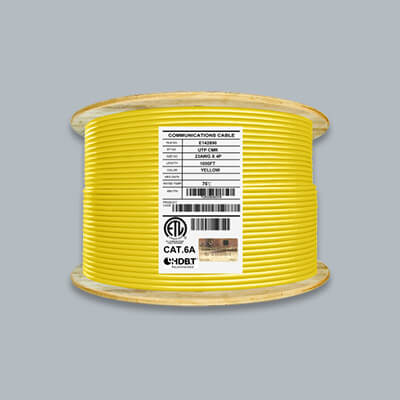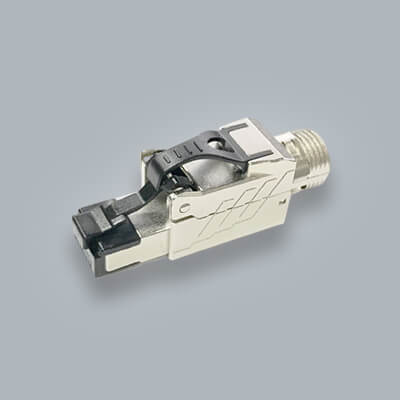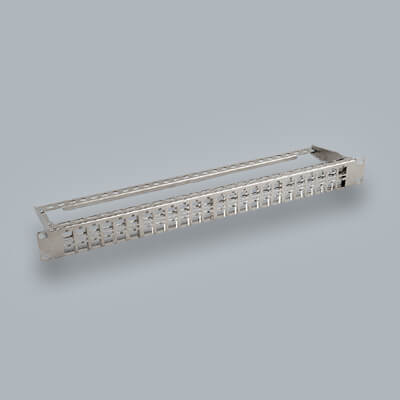What Is A LAN Cable, LAN Wire and LAN?

There was a question that came up not too long ago from someone browsing our website. They noticed that we commonly changed the terms in which we refer to our cables. Most notably is the way we mention Ethernet and Networking cable. In reality there really isn't any difference between the two terms. They can be both interchangeable when referring to our cables. The thing is though they were wondering what is a LAN cable and is there any difference between that and an ethernet cable? In this article we will break down this term for a better understanding on ethernet terminology.
What Is A LAN?
To begin this article lets first start with exactly what is a LAN? A LAN stands for local area network and it is a computer network that interconnects computers in a certain area such as homes, universities, offices, commercial buildings, labs and just about any place with a range of computers in a close vicinity. LANs are vital in computer networking and just about any computer you use is connected to another device in some way. Not only are there small scale network connections but they can vary in size. What about over large areas of land, say large corporations and governments? These are called wide area networks.
The beginning of a Local Area Network (LAN) began in the 1970's with the increase in the need for high speed interconnections of computers in universities and laboratories. With the introduction of ethernet by Xerox in 1973-1974 LAN would soon be off to the races. The first introduction of LAN is a major use case came with the install of it in 1977 at the Chase Bank in New York City.
Now that you've got a little bit of an intro and background to LAN let's dive into how does a LAN actually work?
What Products Are In A LAN?
Whether you're in your home or business you're probably going to be apart of some sort of LAN. The simplest way of setting up a Local Area Network (LAN) is to use an ethernet cable. But what about a LAN cable? This is where the customers question comes in to play. A LAN cable refers to the same thing as an ethernet or networking cables. So when shopping for a LAN cable and you come across an ethernet or networking cable you will be fine. So in definition a LAN cable is cable that connects to computers, network switches and then from the switch to a router, modem or dsl which powers your internet from a internet service provider. These devices when connected together with a wireless LAN, ethernet or networking cable form a LAN (Local Area Network).

What Are The Cables Used For LAN?
With LAN being a connection of multiple computers and networking hardware there are various cables that be used. This includes:
- Copper Twisted Pair (Also referred to as LAN, Ethernet or Networking cable)
- Coaxial Cable
- Fiber Cable
Each of these cables have different designs and functions which power an ethernet connection. To touch on these briefly you'll mostly be using coax cable for connection from your ISP to your modem. This type of cable helps power that connection which gives your network internet access. Coax cables are usually designed with shielding inside them to perform in areas with EMI and higher frequencies.
Twisted pair copper cable is your most common cables used to connect your computers, routers, switches, printers, gaming systems, PoE devices, IP cameras and much more. They come in many different categories such as:
- Cat5e Cable
- Cat6 Cable
- Cat6A Cable
- Cat8 Cable
Note here that each of these cables have a different performance rating. These cables are often used to connect speeds up to gigabit ethernet and beyond. LAN cables also come in unshielded and shielded versions. Shielded LAN cables are for areas with EMI (Electromagnetic Interference). This is common in doctors offices, around cell towers and heavy machinery and will provide better signal quality because of the foil in these areas. Unshielded LAN cables are going to be installed in your homes and business when no EMI is present. Shielded cables are often more expensive than unshielded cables because of the extra material used and different manufacturing methods. Copper twisted pair cable come in different types as well. You will see them in patch cables, crossover cables, and bulk lengths. They will be comprised of a rj45 connector on one end and will be able to plug is to an ethernet port of your choice.
Fiber cable (fiber optic cable) is a type of cable which is made of optical fibers to carry light. This cable can carry signals over long distances and is another very popular solution for business use. Some of the common fiber cable types are:
- OFC - Optical Fiber Conductive
- OFN - Optical fiber nonconductive
- OFCG - Optical fiber conductive general use
- OFNG - Optical fiber nonconductive general use
- OFCP - Optical fiber conductive plenum
- OFNO - Optical fiber nonconductive plenum
- OFCR - Optical fiber conductive riser
- OFNR - Optical fiber nonconductive riser
- OPGW - Optical fiber composite overhead ground wire
- ADSS - All-Dielectric Self-Supporting
- OSP - Fiber optic cable outside plant
- MDU - Fiber optics cable multiple dwelling unit
Fiber cables are also commonly found with different connector types. Some of these range from:
- SC to LC
- SC to SC
- ST to LC
- ST to SC
- LC to LC
What Does a LAN Cable Look Like?
Here's an example of a twisted pair copper LAN cable:

Here's an example of a fiber LAN cable:

Can Wireless Technology Be A LAN?
When you think of wireless you think of a connection that is totally free of any cables or other hardware. You might be surprised to know but wireless technology can actually be considered a Local Area Network. The most popular type of wireless technology we use in businesses and homes is WiFi. You can think of a LAN as a way to connect multiple computers together and that is possible over WiFi. WiFi has become popular among many because of its ease of use. It's quick to set up and relatively free of any maintenance. You can also use copper cables to connect to WiFi devices. A common WiFi device is a wireless repeater and wireless router. These device can be connected via a LAN cable in a couple different ways. For a wireless repeater your can connect a cable to the lan port of the router. For the wireless router you can connect a cable from the modem to the router. From the device on you will have a wireless connection within range. You can then enjoy a internet connection to mobile devices, smart tvs and computers. With all the convenience of wireless technology we do however recommend a wired lan connection when you can for a more reliable network. Hard wiring provides a stronger connection than WiFi especially on a network with many users. This will give you performance benefits on your smart tvs, gaming consoles and computers.

Conclusion
LAN's have become a part of our daily lives in many different ways. Whether playing games on your computer to designing graphics on your computer at work it's most likely that you are apart of a LAN. The most common way a LAN is set up is actually with a LAN cable which can hook up to your computer to the switch to then a router or modem. This then created a small community of hardware and cables which we can describe as a LAN. Even though this is a Local Area Network in its simplest form LAN's can get pretty complex. It's even possible that a LAN can connect with another LAN by something called a leased line. Another common way is via VPN (Virtual Private Network). Depending on the overall scope and size of the LAN it could be classified as a MAN (Metropolitan area network) or a WAN (Wide area network.
We hope you found this article helpful on what is a LAN cable and LAN.
To recap:
- A LAN cable is used for connecting to computers and hardware to form a LAN
- LAN is a Local Area Network of devices and which help connect the network together
- LAN's can be huge in size (MAN or WAN)
- Take a look at your setup in your home and see what's part of your LAN






This article explains what a LAN (Local Area Network) cable is and its essential role in creating wired connections between devices. It clarifies the types of LAN cables, such as Cat5e and Cat6, and how they facilitate data transfer in networked environments like homes and offices. The guide is valuable for understanding how different cables support varying network speeds and distances, helping users choose the best option for their needs.
Understanding LAN cables is key to setting up reliable and efficient networks. This article clearly explains what LAN cables are, their types, and how they work, offering valuable insights for both beginners and those looking to optimize their networking setups. The clear distinction between different cable types and their uses helps in making informed decisions for building strong and high-performance local area networks. A must-read for anyone starting or upgrading their networking infrastructure.
Thanks for sharing this wonderful information. Keep sharing.
great work with good content.Thank you it was helpfull
Very interesting and well written article. Thank you for the effort and contribution.
I think I’m brain dead.
I still don’t know if I hsve a LAN or not
Your information is Cso well written and consise that I am
Convinced the problem is me and there are no faults On your side.
Thank you for the feedback! Happy to hear you found the blog helpful.
Thank you for this suitable article about what is a lan cable and lan, it will help me and people like me looking for the same. I appreciate your effort for taking time to do your research and present these details before us. Really nice way to present this content, very appreciative!!
I loved your blog and thanks for publishing this content about what is a lan cable and lan!! I am really happy to come across this exceptionally well written content. I like how you have researched and presented these exact points so clearly. Thanks for sharing and look for more in future!!
Thank you VOIP for the nice feedback ! Glad you found it helpful, let us know if we can be anymore help
This is such a nice blog on what is a lan cable and lan. This article provides us true and insightful information regarding it. This article is very helpful. I am sure many people will come to read about it in future. You have done an excellent job with this content I must say.
Thank you Pat for the comment on the article. Glad you found it helpful. If you have any further questions please contact us at support@infinity-cable.com
Great explanation…. very clear. Thanks.